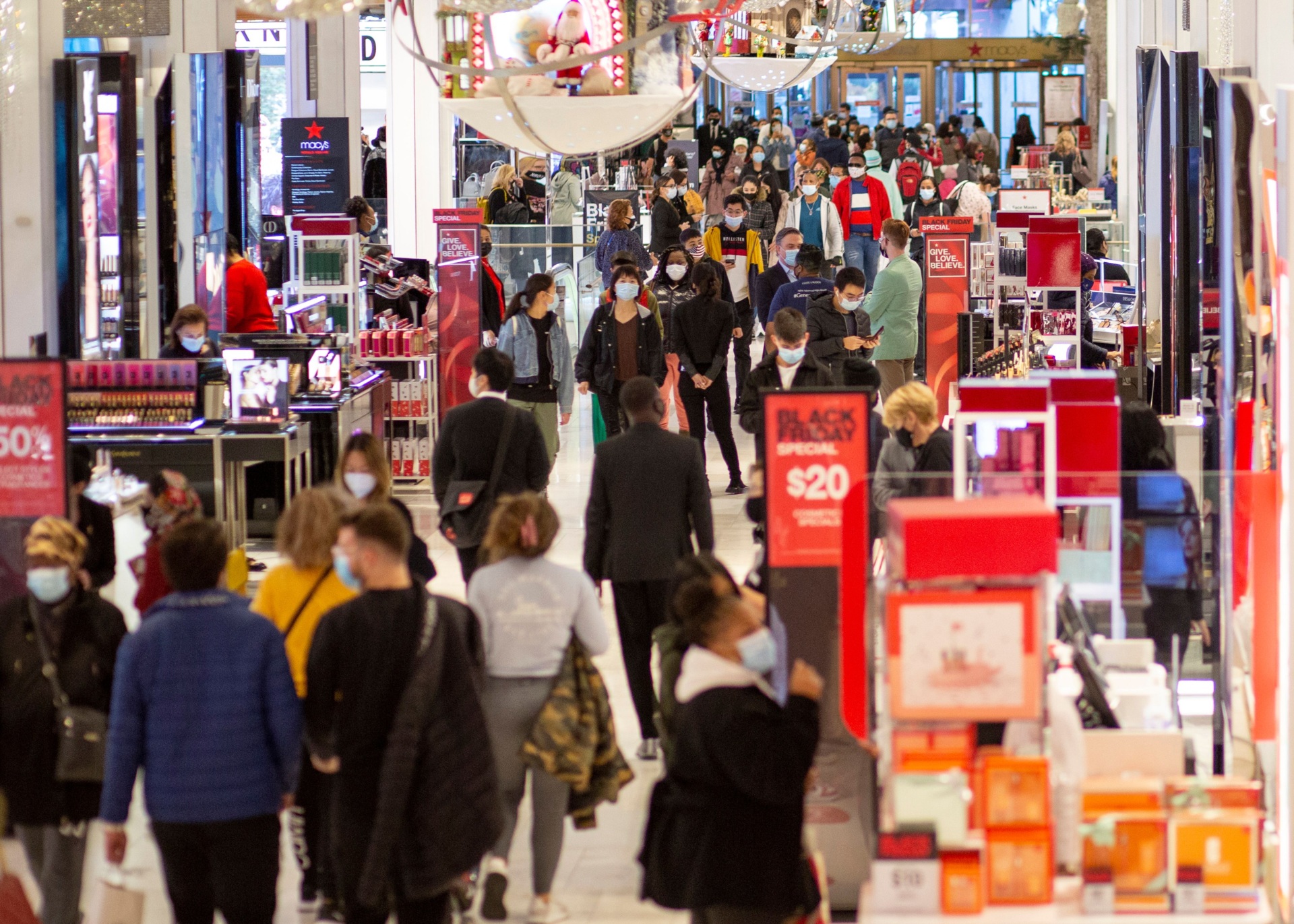Here we go again.
The Commerce Department on Wednesday said that consumer spending grew by 1.3 percent compared with September, when spending was unchanged with the prior month. Compared with a year ago, retail sales were up 8.9 percent. Total sales for the August through October period were up 8.9 percent compared with the three-month span a year ago.
Rising gasoline prices boosted sales at gas stations 17.8 percent from October 2021. Compared with a month ago, gas station sales were up 4.1 percent. Those figures almost exactly match the change in prices of gasoline. The consumer price index for gasoline was up 17.5 percent from a year earlier and 4.0 percent for the month, according to a separate Labor Department release published last week.
Sales at restaurants and bars—which the government calls “food services and drinking places”—were up 14.1 percent from last year and 1.6 percent from September. The consumer price index for full-service restaurants was up nine percent compared with a year ago and 0.9 percent from the prior month. The prices of alcoholic beverages consumed outside the home rose 1.6 percent in October and were up seven percent from a year ago. So there has been a real increase in spending on dining and eating out.
Car sales were up briskly. Motor vehicle sales were up 1.5 percent for the month and 5.2 percent from a year ago. This is partly inflation and partly pent-up demand due to supply chain constraints that left many auto dealers without enough cars to sell for a good part of this year. Prices of new cars and trucks are up 8.4 percent from a year ago—which means real sales have fallen year-over-year—and 0.4 percent in October—implying a more recent real improvement in sales.

Customers shop at Macy’s department store in New York City on November 27, 2020. (Kena Betancur/AFP/Getty Images)
It wasn’t all just cars, gasoline, bars, and restaurants, however. Retail trade—which excludes those things—rose by 1.2 percent, which was more than expected and more than the 0.4 percent overall increase in consumer prices. Furniture store sales rose 1.1 percent. Online sales were up 1.2 percent. Clothing store sales were flat—but with the index of apparel prices falling 0.7 percent, this indicates a real gain.
This is being seen as a sign of consumer strength amid—or even in defiance of—inflation and fears of a looming recession.
“Americans stepped up their spending at retailers, restaurants, and auto dealers last month, a sign of consumer resilience as the holiday shopping season begins amid painfully high inflation and rising interest rates,” the Associated Press rejoiced.
Does this sound familiar? It should because almost the exact same thing happened last year when retail sales jumped 1.7 percent in October. “The elevated spending level suggests solid holiday sales this season, lifting the economy as a whole. J.P. Morgan said it was upgrading its growth expectations,” the Wall Street Journal reported at the time. The other outlets were full of the same blather about consumer strength and resilience.
We warned that this had the makings of a head fake. As we learned from Richard Curtain, the now retired director of the University of Michigan’s survey of consumer sentiment, a period of rapidly rising prices gives rise to what is known as “inflationary psychology.” What’s that? Let’s let Curtain explain: “Consumers purposely advance their purchases in order to beat anticipated future price increases. Firms readily pass along higher costs to consumers, including the future cost increases that they anticipate.”
“Worries about shortages and supply chain disruptions could also be pushing households to do holiday shopping earlier this year, which would boost spending in October but may result in disappointing numbers for November and December sales,” Breitbart News reported on November 16 of 2021.
Which is exactly what happened:
Retail sales in the U.S. declined sharply in December, indicating that the worst inflation in decades is hitting consumers harder than analysts expected.
Total retail sales dropped 1.9 percent in December, typically a month of robust holiday shopping, Commerce Department data showed Friday. The figures are not adjusted for inflation, suggesting that price-adjusted purchases were even weaker. The Consumer Price Index rose 0.5 percent in December.
The excess inventories left over from that holiday season helped push the U.S. economy into contraction as businesses worked to clear out warehouses and store shelves which had been filled in anticipation that consumer spending in October would lead to more consumer spending in the final two months of 2021.
Retail sales history appears to be once again repeating itself. Fed Ex has said it will furlough drivers in early December because it expects that demand will be lower. Target has cut its outlook for fourth quarter profit. A survey from Deloitte showed that consumers expect to spend about as much on gifts this year as they did last year—despite prices being much higher. These are not the heralds of a strong holiday shopping season.

COMMENTS
Please let us know if you're having issues with commenting.